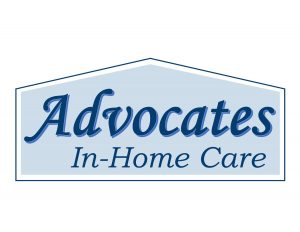Vision loss among seniors is a major health issue. About one in three people over 65 will experience some form of vision-reducing eye problem. Since many eye problems develop slowly and painlessly, it is important to get regular eye exams. You may not notice the changes in your vision, but an eye exam could detect a potentially serious eye disease. Early treatment might save your eyesight.
Since your 40s, you may have noticed that your vision is changing. Perhaps you need glasses to see up close. Maybe you have more trouble adjusting to glare or distinguishing some colors. These changes are a normal part of aging and don’t need to stop you from enjoying an active lifestyle or maintaining your independence.
But as you age, you are at higher risk of developing age-related eye diseases and conditions. These include: age-related macular degeneration, cataract, diabetic eye disease, glaucoma and dry eye. Early detection and treatment is critical to avoid vision loss. Eye exams may also uncover other health issues such as artery blockages, hypertension or diabetes.
Common Age-related Eye Diseases and Conditions:
Age-related Macular Degeneration (AMD)
AMD is the leading cause of loss of vision in people over 65. AMD is a disease that gradually destroys sharp, central vision. Central vision is needed for seeing objects clearly and for common daily tasks such as reading and driving. Risk factors for AMD include age, family history, hypertension and smoking.
Cataract
Cataract is a common cause of senior vision impairment and a leading cause of blindness worldwide. In the US, cataract-related blindness is reduced due to surgery that is readily available, safe & effective. A cataract is a clouding of the lens in the eye. Vision with cataracts can appear cloudy or blurry, colors may seem faded and you may notice a lot of glare.
Diabetic Eye Disease
Diabetic eye disease is a complication of diabetes and a leading cause of blindness. In general, the likelihood of diabetic vision loss increases the longer one is a diabetic. However, for seniors, vision problems may be apparent at the time of diagnosis.
Glaucoma
Glaucoma is a group of diseases that can damage the eye’s optic nerve and result in vision loss and blindness. It is the most common cause of blindness among black Americans. Glaucoma is usually associated with high pressure in the eye and affects side or peripheral vision. An estimated one million Americans over 65 have loss of vision related to glaucoma. And about 75 percent of those who are legally blind because of glaucoma are senior citizens.
Dry Eye
Dry eye occurs when the eye does not produce tears properly, or when the tears are not of the correct consistency and evaporate too quickly. Dry eye can make it more difficult to perform some activities, such as using a computer or reading for an extended period of time. Dry eyes are a part of the natural aging process. The majority of people over age 65 experience some symptoms of dry eyes.
LIFE IMPACT
Driving
Age-related vision changes can affect a senior’s ability to drive safely. You may experience difficulty seeing objects up close, such as the car instrument panel or a road map. Road signs may become blurry. As your vision deteriorates, you may start to have problems judging distance and speed. Changes in color perception and/or difficulty seeing in low light may impair ability to tell when a traffic light changes. Adapting to bright sunlight or the glare of a headlight may become challenging.
Hygiene
You may have difficulty seeing well enough to complete your normal personal cares. Some suggestions that may help those seniors dealing with vision issues include:
• marking your toothbrush with brightly colored tape or a raised sticker for easy identification,
• using pump packs that squeeze out pre-measured amounts of toothpaste, soap & lotion,
• putting shampoo and conditioner in different colored or shaped containers,
• uncluttering countertops to make it easier to find the correct item & always putting the things you need back in the same place.
Dangers
Seniors with vision loss have an increased risk of falling. And falling is one of the leading causes of injuries resulting in hospitalization. Preventing a fall can be critical.
To help a senior with low vision remain as safe as possible:
• Leave things as you find them in their home. If something must be moved, be sure to tell the senior where you put it.
• Use caution when cleaning the house. Cords, wet floors, a mop & bucket are all potential hazards for tripping or slipping.
• Shut doors completely – or leave them completely open. A half-open door is a hazard.
• Replace light bulbs to provide good lighting, especially for stairs, closets & hallways.
• Declutter the home and help dispose of items no longer needed or meaningful.
• Install grab bars for stairways and bathrooms.
• Point out obstacles that could be tripping hazards, such as loose rugs or cords on the floor.
Get a comprehensive dilated eye exam
Everyone age 50 or older should visit an eye care professional for a comprehensive dilated eye exam. Many eye diseases have no early warning signs or symptoms, but a dilated exam can detect eye diseases in their early stages before vision loss occurs. Early detection and treatment can help you save your sight. Even if you aren’t experiencing any vision problems, visit your eye care professional for an eye exam. He or she will tell you how often you need to have a dilated eye exam depending on your specific risk factors.

Recent Comments